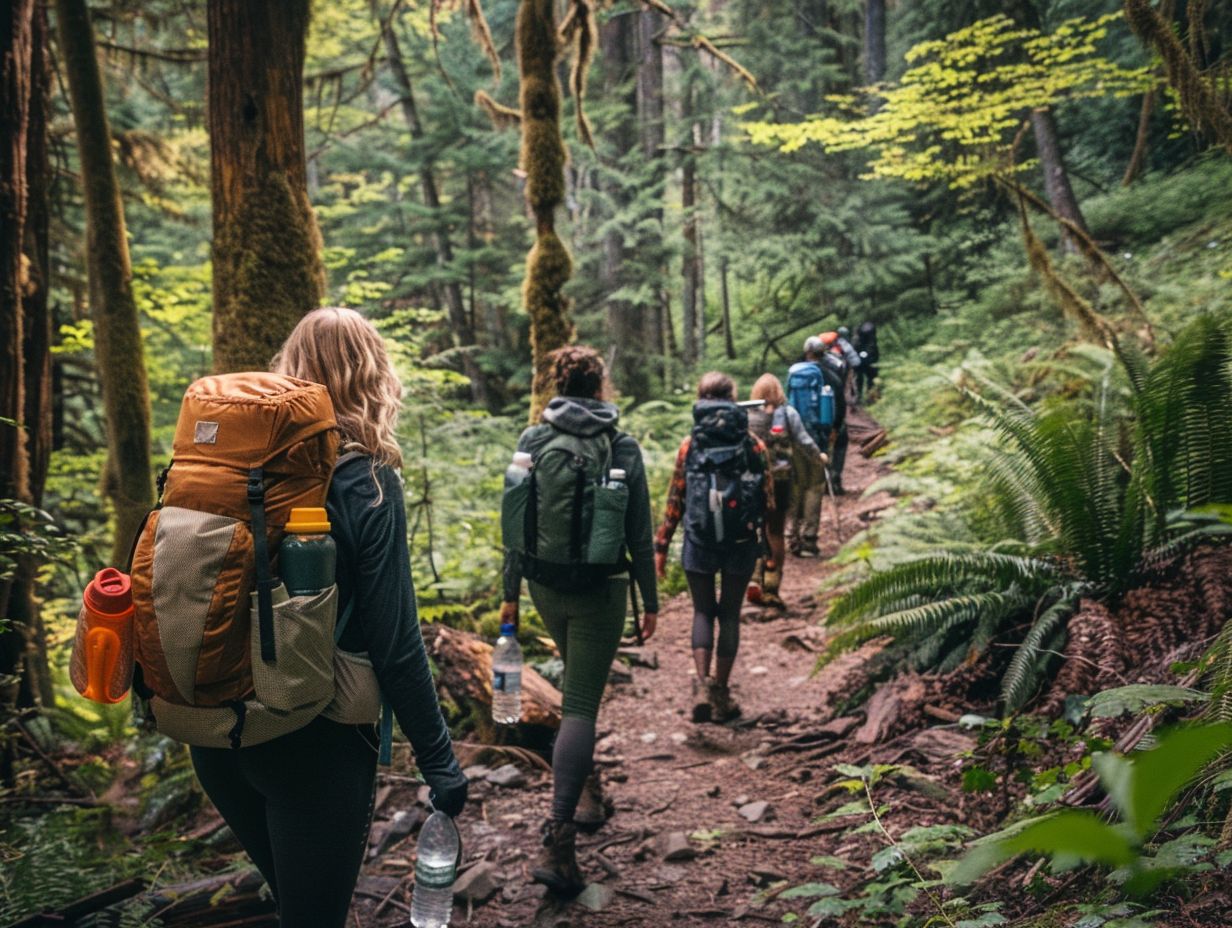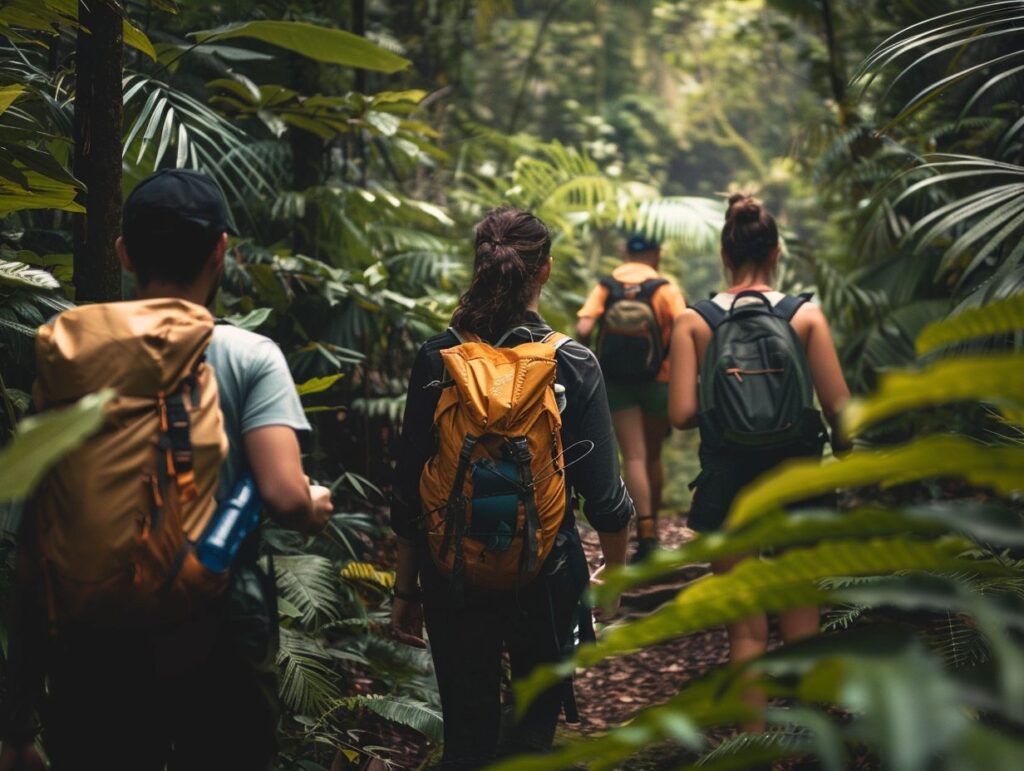Are you an outdoor enthusiast looking to minimise your impact on the environment while enjoying the great outdoors?
Eco-friendly hiking is the perfect solution! We discuss the importance and benefits of eco-friendly hiking and provide essential tips on how to prepare for a sustainable adventure.
From choosing sustainable gear to practicing Leave No Trace principles, we’ve got you covered. Dive into the world of eco-friendly hiking and discover how you can enjoy nature responsibly.
Key Takeaways:
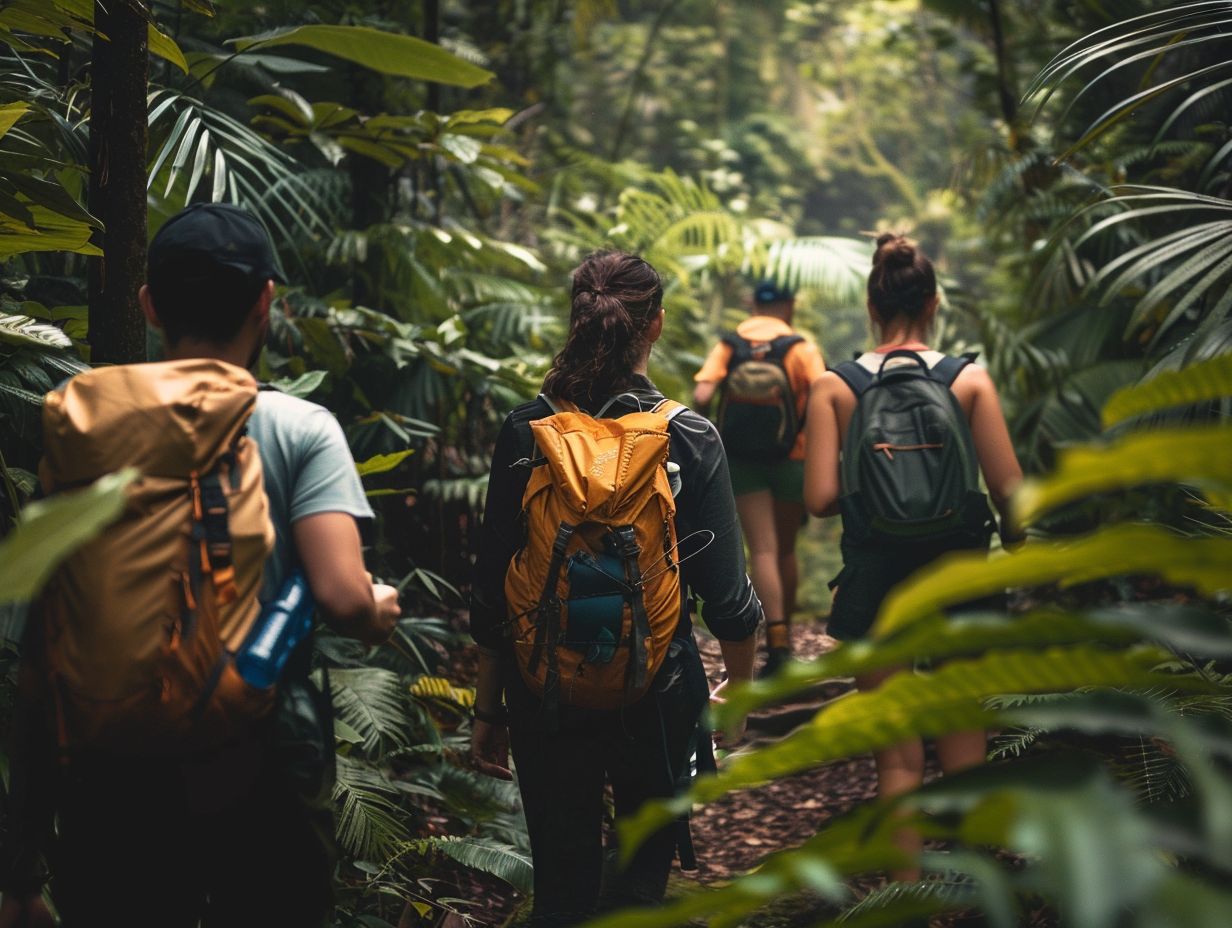
- Choose sustainable gear and supplies, plan your route carefully, and leave no trace behind to reduce your environmental impact and support local communities while promoting physical and mental well-being.
- Stick to designated trails, respect wildlife and their habitat, and minimise campfire impact to preserve the natural beauty and balance of the environment.
- Bring reusable containers and water bottles, and pack out what you pack in to reduce waste and minimise your ecological footprint during your eco-friendly hiking adventures.
How To Prepare for an Eco-Friendly Hike?
The preparation for an environmentally conscious hike involves selecting sustainable equipment, meticulously planning the route, and strictly adhering to Leave No Trace principles to minimise the environmental impact.
1. Choose Sustainable Gear and Supplies
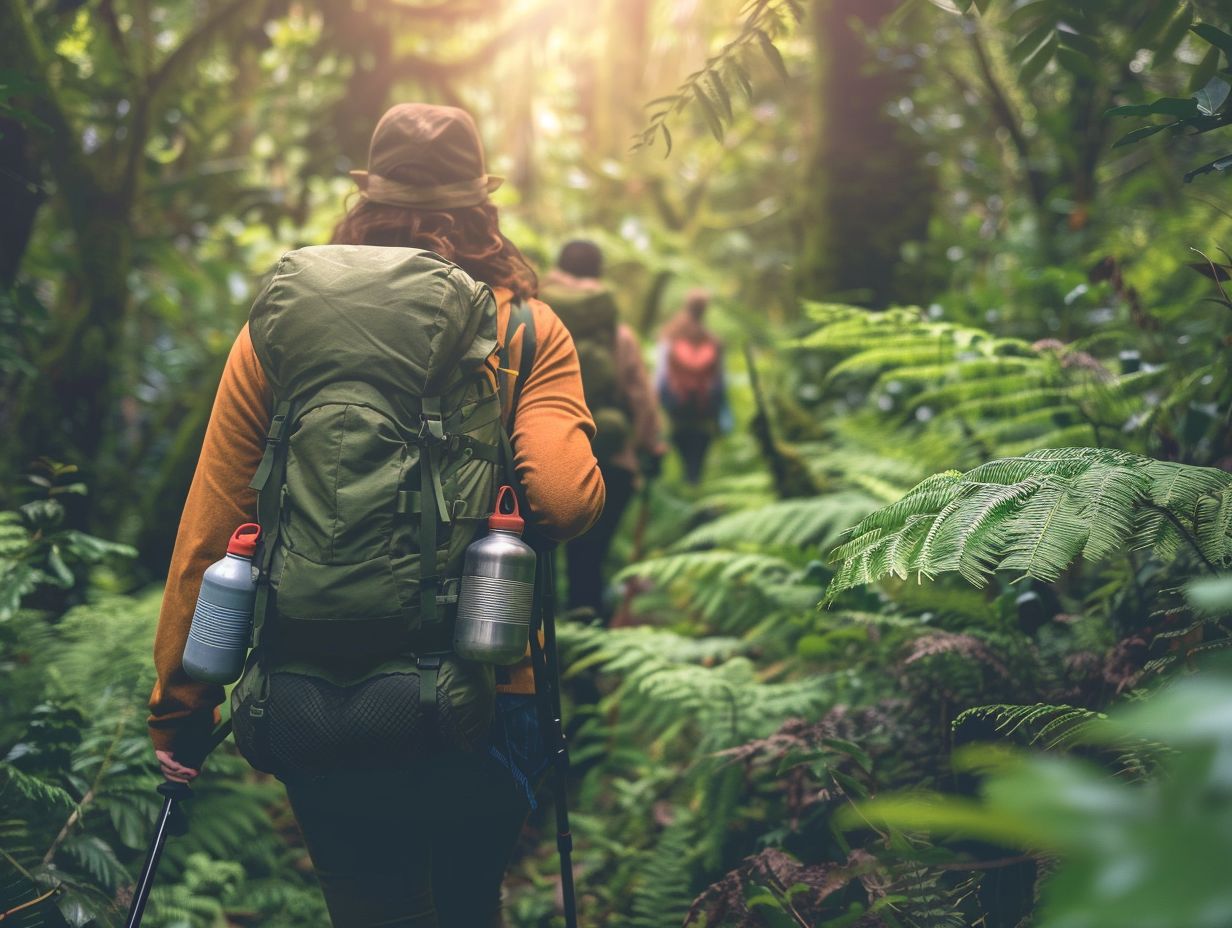
Selecting sustainable gear and supplies is essential for promoting environmental responsibility during a hiking expedition, as it serves to minimise waste production and environmental harm.
Opting for outdoor attire crafted from eco-friendly materials not only yields positive ecological impacts but also enhances the hiker’s overall experience by providing comfort and breathability.
Moreover, the choice of robust and sustainable rucksacks, made from recycled materials or ethically sourced fabrics, ensures the ability to transport essential items without detrimental effects on the environment.
By consciously investing in environmentally conscious outdoor equipment, hikers actively contribute to conservation efforts and play a crucial role in safeguarding the natural beauty of hiking paths for future generations.
2. Plan Your Route Carefully
It is imperative to carefully plan your route to ensure adherence to designated trails and prevent unnecessary damage to natural landscapes.
By utilising designated trails, hikers can play a vital role in conserving the surrounding environment and minimising disturbances to local wildlife. These trails are usually meticulously maintained, thereby decreasing the likelihood of erosion and habitat destruction.
In planning a sustainable hiking route, it is advisable to review trail maps and guidelines offered by local conservation organisations to determine the most suitable paths to traverse. Opting to hike during non-peak hours can aid in alleviating congestion on popular trails, thus facilitating a more pleasant and environmentally conscious outdoor experience.
3. Leave No Trace Behind
Adherence to the Leave No Trace principles is a fundamental component of sustainable hiking practices, aimed at minimising the environmental impact of your presence.
By meticulously following these principles, hikers can play a significant role in preserving the natural beauty of their surroundings and ensuring they remain unspoilt for future generations.
One critical practice involves the meticulous removal of all rubbish and litter, leaving no evidence of human activity behind. Additionally, reducing the impact of campfires by utilising designated fire rings or portable stoves helps prevent harm to the ecosystem.
Demonstrating respect for wildlife and their habitats is another essential principle, encouraging hikers to observe animals from a safe distance and refrain from disrupting their natural behaviors.
4. Bring Reusable Containers and Water Bottles
Utilising reusable containers and water bottles presents an effective strategy for diminishing plastic waste and embracing sustainable dining practices whilst embarking on a hiking excursion.
These environmentally conscious alternatives serve to not only safeguard the natural surroundings by reducing the reliance on disposable plastics but also provide individuals with the opportunity to mitigate their carbon footprint.
Selecting lightweight and compact reusable containers and bottles facilitates ease and practicality throughout the duration of the trek. It is advisable to opt for materials of robust quality, such as stainless steel or silicone, given their durability and simple maintenance requirements.
Furthermore, it is imperative to replenish one’s water supply at designated filling stations or natural water sources to ensure proper hydration whilst revelling in the splendour of the outdoors.
5. Pack Out What You Pack In
An essential tenet of environmentally conscious hiking involves the practice of removing all waste brought into the natural environment, thus ensuring that no litter is left behind and minimising the ecological footprint.
By strictly adhering to this principle, hikers contribute significantly to the preservation of the scenic beauty and ecological equilibrium of our trails and wilderness areas. Even items that are biodegradable, such as food remnants and organic substances, must be carried out to prevent adverse effects on wildlife and ecosystems.
The concept of leaving no trace not only guarantees an immaculate environment for future generations to appreciate but also showcases a profound reverence for nature and a dedication to sustainable outdoor methodologies.
What Are Some Eco-Friendly Hiking Practices?
Practices that are environmentally sustainable in the context of hiking encompass:
- Adherence to designated trails
- Demonstrating respect for wildlife and their habitats
- Minimising the impact of campfires
- Ensuring the proper disposal of waste
1. Stick to Designated Trails
Adhering to designated trails is of utmost importance to mitigate environmental impact and safeguard delicate ecosystems from the detrimental effects of off-trail hiking.
By adhering to established paths, hikers play a significant role in mitigating soil erosion, conserving wildlife habitats, and protecting local plant species. The selection of designated trails is a meticulous process aimed at striking a harmonious balance between accessibility and conservation, ensuring that visitors can appreciate nature without disrupting its intricate equilibrium.
When embarking on hiking excursions, the selection of appropriate hiking footwear is imperative for both comfort and safety. Depending on the terrain characteristics – whether it is rocky, muddy, or rugged – the choice of suitable footwear featuring adequate traction and ankle support can greatly enhance the overall outdoor experience.
2. Respect Wildlife and Their Habitat
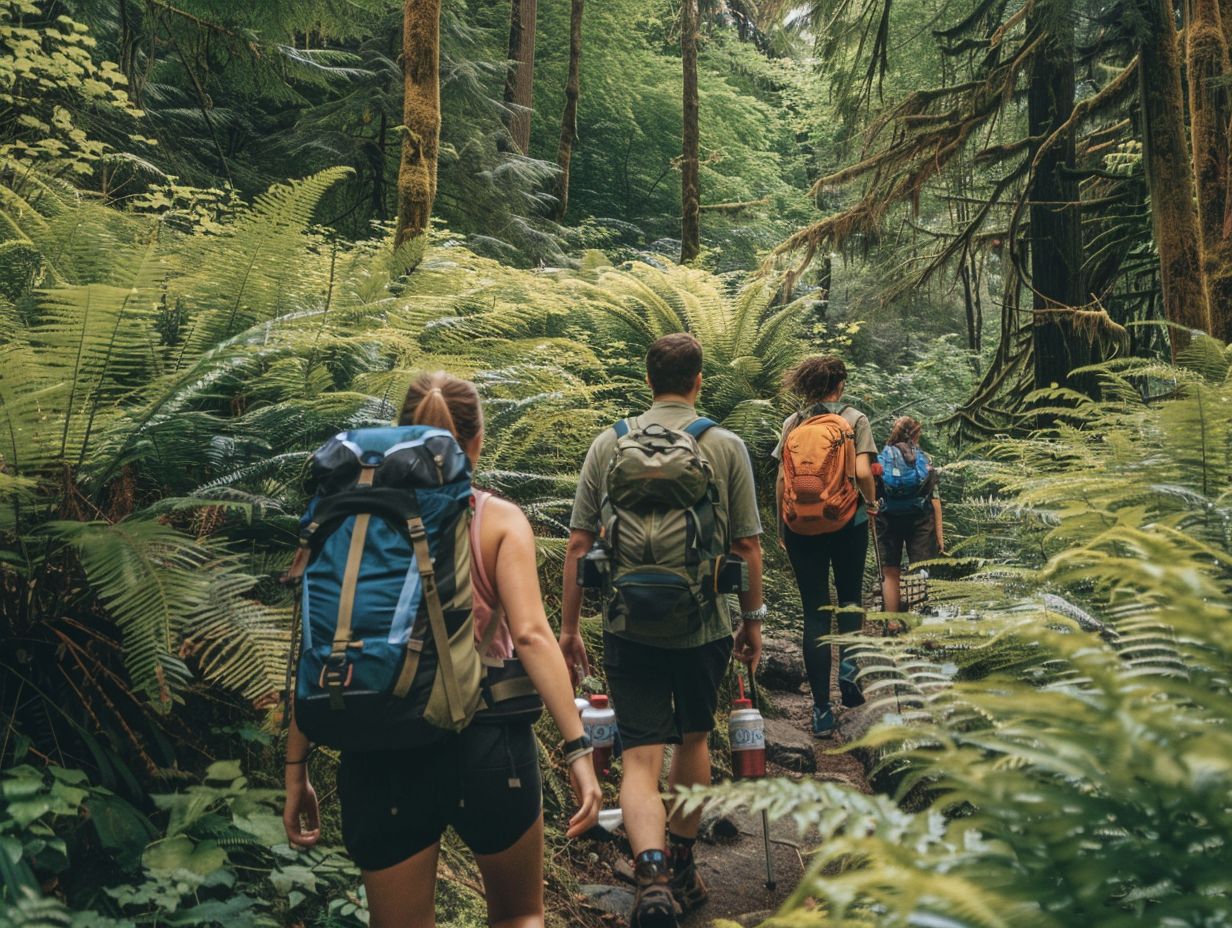
Ensuring the preservation of wildlife and their habitats plays a critical role in sustainable hiking practices, guaranteeing that one’s presence does not disrupt or pose harm to the fauna and natural terrains encountered during the excursion.
Observing wildlife from a respectful distance stands as a fundamental principle for their welfare, facilitating the continuation of their natural behaviours without instigating feelings of threat.
One should refrain from succumbing to the impulse of feeding animals, as this action not only interferes with their natural dietary patterns but can also foster a dependency on human-provided food sources.
Maintaining a quiet demeanour while traversing through natural landscapes serves to minimise disturbances, thereby enabling hikers to witness wildlife in their uninterrupted and authentic states.
To demonstrate reverence for the natural habitats, individuals are advised to adhere strictly to designated hiking trails, refrain from trampling on vegetation, and refrain from extracting any plants or rocks as keepsakes.
3. Minimise Campfire Impact
Minimising the impact of campfires is imperative in adherence to Leave No Trace principles and the promotion of sustainable hiking practices.
One of the most effective methods for ensuring campfire safety and reducing environmental impact is to utilise established fire rings whenever they are available. These designated areas serve to contain the fire and mitigate the risk of it spreading uncontrollably.
It is essential to keep fires small to prevent them from escalating and causing harm to the surrounding ecosystem. Before departing the campsite, it is crucial to thoroughly extinguish the fire by extinguishing it with water and stirring the ashes to confirm the absence of any remaining embers.
These basic procedures play a significant role in preserving the natural beauty of the landscape and guaranteeing the safety of all outdoor enthusiasts.
4. Dispose of Waste Properly
The proper disposal of waste represents a crucial element of environmentally conscious hiking practices, aimed at mitigating environmental harm and upholding the cleanliness of natural surroundings. When addressing the disposal of various waste materials during a hiking excursion, adherence to specific protocols is imperative.
In managing human waste, individuals should utilise designated facilities such as composting toilets or, in their absence, dig holes approximately 6-8 inches deep at a minimum distance of 200 feet from water sources.
Food remnants should be carefully packed and carried out in securely sealed bags to prevent wildlife attraction. Discarded items like wrappers or bottles must be transported back and appropriately disposed of through recycling or designated waste receptacles.
By adhering to these basic guidelines, hikers can ensure a leave-no-trace approach and preserve the environment for the enjoyment of future generations.
Frequently Asked Questions
What are some eco-friendly hiking tips for sustainable adventures?
Some eco-friendly hiking tips for sustainable adventures include packing out all trash, using reusable containers for food and drinks, choosing sustainable hiking gear and clothing, and sticking to designated trails.
Why is it important to practice eco-friendly hiking?
Practising eco-friendly hiking is important because it helps to preserve and protect the natural environment for future generations. It also reduces the negative impact that human activities can have on delicate ecosystems.
How can I reduce my waste while hiking?
You can reduce your waste while hiking by bringing reusable containers for food and drinks, avoiding single-use items, and properly disposing of any waste or trash in designated bins or by packing it out.
What are some sustainable gear options for hiking?
Some sustainable gear options for hiking include using a refillable water bottle instead of disposable plastic bottles, choosing clothing and gear made from sustainable materials such as organic cotton or recycled materials, and using rechargeable batteries for electronic devices.
How can I minimise my impact on the environment while camping?
To minimise your impact on the environment while camping, consider using a camp stove instead of building a fire, choose a campsite at least 200 feet away from water sources, and follow Leave No Trace principles by packing out all trash and leaving the campsite as you found it.
What are some ways to support sustainable hiking practices?
You can support sustainable hiking practices by being mindful of your actions and their impact on the environment, educating yourself on Leave No Trace principles, and supporting organisations that work towards preserving and protecting natural areas for future generations to enjoy.
